Five Grains & Fermentation: WAGASHI with a Modern Twist
Jun 10,2021
Five Grains & Fermentation: WAGASHI with a Modern Twist
Jun 10,2021


Shunkado, known for its unagipie pastry from Hamamatsu, Shizuoka, launched the confectionary brand Gokokuya in 2014. With its the concept of healthy Japanese confectionery made with traditional wisdom, the brand sells Japanese confectionery featuring five traditional grains, such as foxtail millet, proso millet, and Japanese barnyard millet, and fermented ingredients.
We spoke about the brand’s intentions in creating these Japanese confectionery with Hosoda Miho, who has been with involved with the confectionery since the brand’s launch, and Nozaki Mayuko, who is in charge of product development.
By far, Shunkado is best known for its unagipie pastry, which is loved in Japan and abroad. Shunkado was originally founded in 1887 as a Japanese confectionery shop. From its beginnings, the company has placed importance on preserving and handing down the culture of Japanese confectionery as well as Japanese customs and cuisine. In today’s age, when anything from around the world can be easily obtained, it is more vital than ever to share traditional Japanese wisdom. This passion is what inspired the Gokokuya confectionery brand, which is based on five grains and fermentation.
Gokoku, literally meaning five grains or five cereals, generally refers to varieties of millet, such as foxtail millet, proso millet, and Japanese barnyard millet. Gokokuya, however, uses gokoku as a more general word that adds barley, brown rice, and beans to millet, effectively including all grains other than white rice, the staple food of the Japanese diet.
Hosoda explains the brand’s philosophy. “The word gokoku, or millet, tends to be thought of as bland fodder, and fermented ingredients, although they appear in many forms on our dining tables, are often relegated to a subordinate role in our diets. With this brand, however, we brought these two elements together as the main features in order to offer a new deliciousness in confectionery that dispels conventional perceptions.
“The philosophy of ‘studying the past to innovate for the future’ has always been at the root of Shunkado. In essence, this means questioning the old with sincerity and an open heart in order to create the new. So our aim is to create Japanese confectionery that preserves the best of old traditions, while devising innovative elements in terms of taste, texture, and packaging to appeal to younger generations as well.”
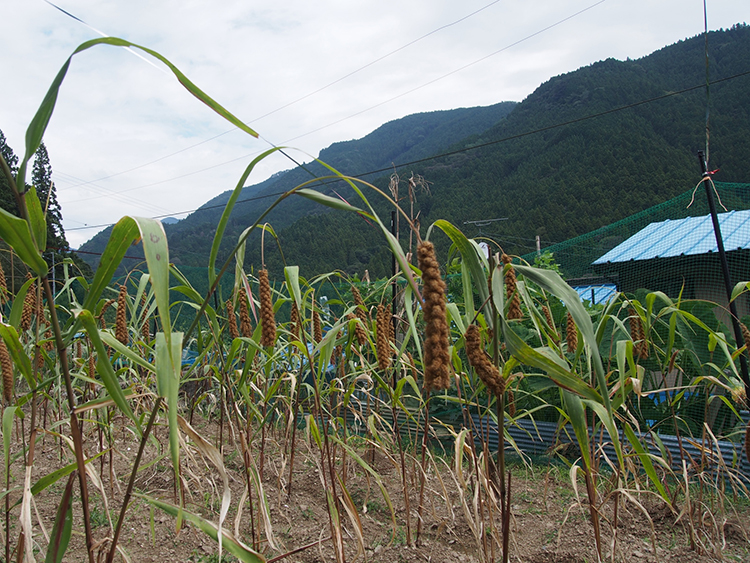
Nozaki continues: “We add fermented ingredients such as miso, soy sauce, salted koji [rice malt], and honkarebushi bonito flakes to the gokoku base to enrich the umami flavor and depth of our products. Another important concept is living in harmony with the seasons. What this means in practice is we develop seasonal confectionery that evokes the changing of the seasons and a sense of Japan’s seasonal events that take place throughout the year. It is our hope that our confectionery, which is delicious to both the body and soul, will inspire people to grow even fonder of Japanese culture.”
Gokokuya puts importance on instilling in their confectionery the passion of its producers. When selecting ingredients for their confectioneries, Gokokuya visits producers and artisans, speaks and listens to them directly, and applies their knowledge to product development.
Nozaki details their approach. “We want to convey, through our confectionery, the passion and stories of our producers, such as farmers who grow crops with care and dedication and soy sauce breweries that continue to use wooden barrels and other traditional techniques. Our product development sometimes begins after visiting producers and experiencing the excellence of the ingredients and understanding the artisans’ sentiments. We then explore how to best make use of the flavor of those ingredients.”
Hosoda adds: “There’s a lot we would not know if we did not visit our producers on site. There are few opportunities in our modern diets to come in contact with soy sauce or miso produced in the traditional ways. This is why we want to highlight and support our producers, while sharing Japan’s traditions to a broad audience through the medium of Japanese confectionery.”
One of Gokokuya’s more popular products is Itsuki. The product, whose name literally means five seasons, represents the five seasons — spring, summer, autumn, winter, and the doyo transition period referring to the 18 days before each season based on the traditional Japanese calendar — with five yokan [sweet bean jelly] pieces, each a different vibrant color. The five flavors are created with the five fundamental fermented seasonings — namely, saké, salted koji, vinegar, soy sauce, and miso. The spherical shape of the jellies creates an adorable visual impression.
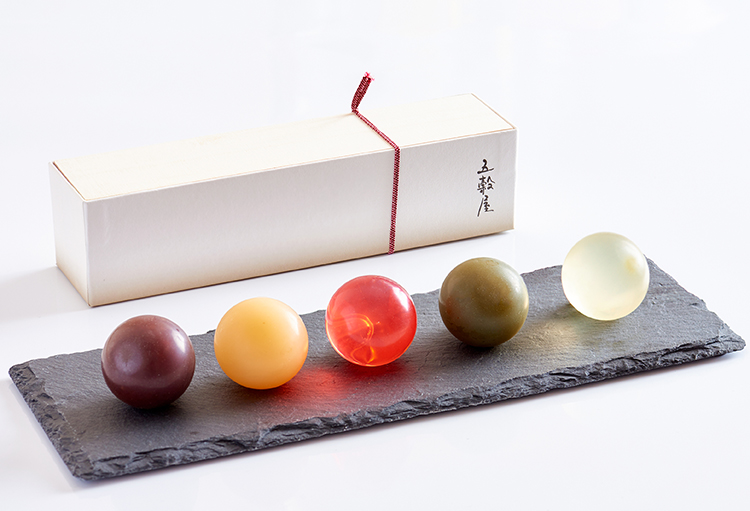
Itsuki consists of five colored yokan jellies with stunning visual appeal
Another leading Gokokuya product is Yama Musubi, five-grain senbei rice crackers. Made without any binders, the product’s crispy texture is produced by keeping the rice grains intact. The mountain-shaped design evokes the bounty of nature, and the rich full flavor, made with fermented ingredients, also sets these crackers apart.
The brand is currently developing a series called Travelling Yama Musubi, which will use distinctive ingredients from various regions of Japan. There are also plans to sell Yama Musubi Dashi Yunoko, which will use bits of Yama Musubi broken in the manufacturing process and combine them with a soup base of bonito and kelp. The Yunoko refers to the crispy rice served at the end of a traditional kaiseki course meal. The product will transform the otherwise discarded Yama Musubi bits into a new enjoyable dish.
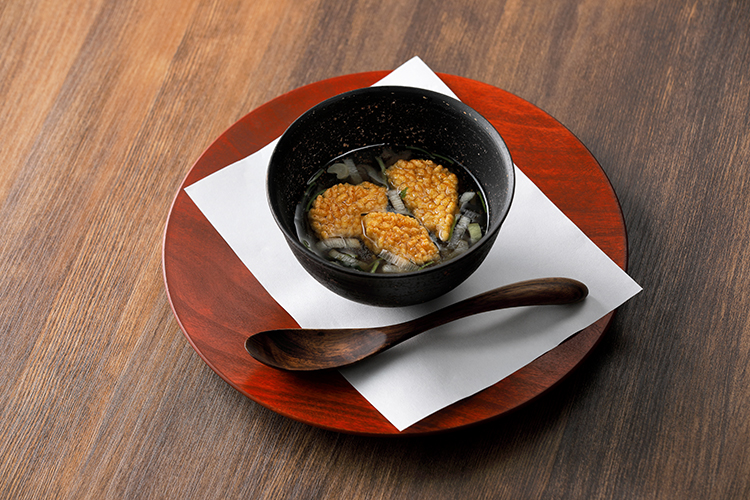
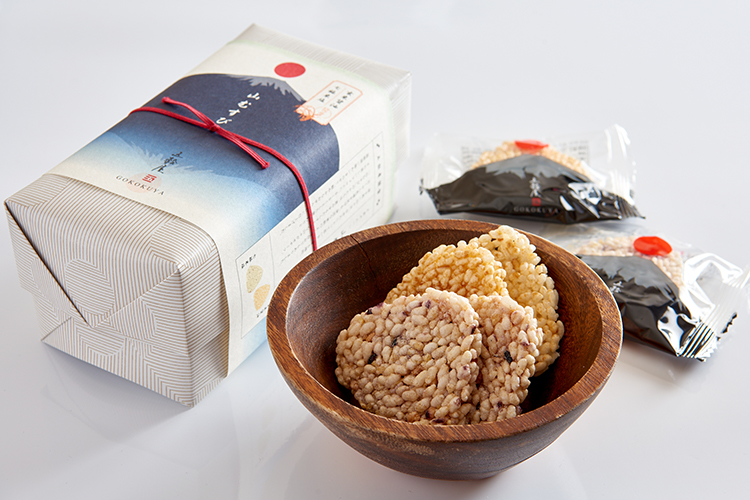
Yama Musubi rice crackers charm with their adorable mountain shape
Nozaki describes the reception to Gokokuya’s products. “We have showcased Yama Musubi at events and receptions overseas and presented Itsuki at the Palazzo Medici Riccardi in Florence, Italy. Japanese confectioneries made with five grains and fermentation have been received positively abroad. We plan to promote the goodness of Japan’s traditional food culture very actively both domestically and globally.”
Gokokuya has been involved in the Foxtail Millet Cultivation Project since the brand’s inception. The project is set in the Misakubo region, which is located in the mountains north of the city of Hamamatsu. In collaboration with a Misakubo NPO, the brand grows five grains and host events such as hands-on harvesting experiences and cooking demonstrations.
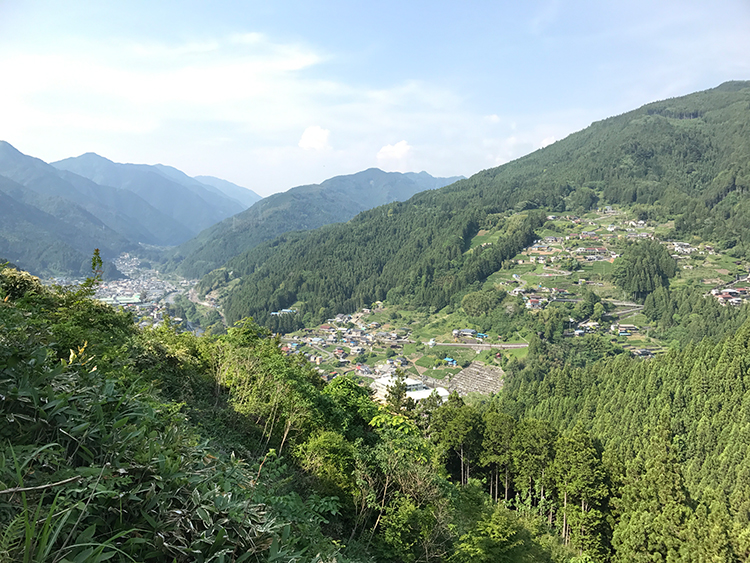
Misakubo lies between mountains north of Hamamatsu
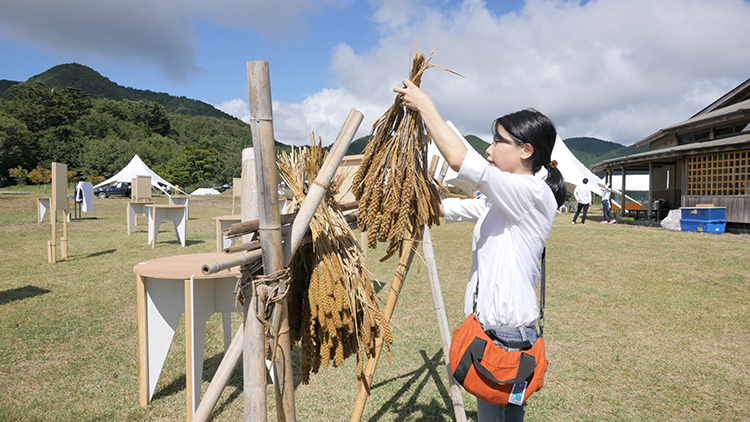
Hosoda describes how they got involved in the project. “When we were initially searching for the five grains to use as ingredients in our Japanese confectionery, we met a farmer who was growing native varieties of foxtail millet in Misakubo. We were amazed by the excellence of these locally grown grains, which we had no idea of before. Because there were many fallow fields in the mountainous area, we decided to grow foxtail millet ourselves.
“When you cultivate something from scratch with your own hands, your connection and passion for the crop naturally grows stronger. Many of the local people who participated in our Misakubo Gokoku Farm programs, which we ran from 2017 through 2019, were amazed that millet could make such tasty meals. We still face challenges, such as low harvest yields, but we hope to use the Misakubo Gokoku Farm to tell more people about the region’s history and the new charms of the five grains.”
Nozaki outlines the next part of their project. “In the spring of 2021, we started an owner system for Enshu peanuts, which were once widely cultivated in the area. Participants become owners of plots of land, where they experience the entire process from planting seeds to harvesting Enshu peanuts. After the harvest, they can make their own peanut butter and enjoy various dishes made with the peanuts, and thus fully experience all the joy of local ingredients and agriculture.”
The two add: “Our aim is to make confectioneries that connect people — from local residents to producers — and convey the goodness of Japan.”
Through contemporary arrangements of the traditional culture of the five grains and fermentation, Gokokuya is sharing Japan’s native food wisdom through confectioneries.
